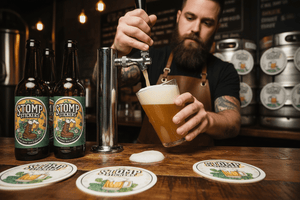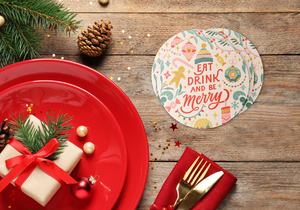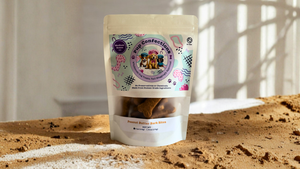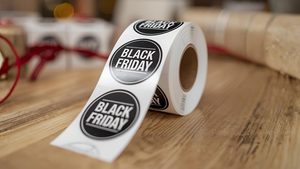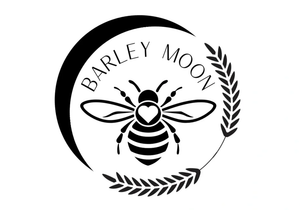What's in a Label: Honey Label Requirements Made Easy

Harvesting honey is a job nearly as old as farming or brewing beer. These days, however, modern labeling requirements have made selling honey a little harder than it used to be.
Don’t worry, though - honey label requirements are still pretty straightforward, and your honey label can become a masterpiece with just a little knowledge and due diligence.
Follow our guide, and you’ll be positively buzzing as your honey flies off the shelves.
What is Honey… Legally?
Legally, honey is considered a food product, which means it’s subject to regulations and standards set forth by various governmental authorities, including food safety agencies and agricultural departments. In the USA, the FDA issues guidelines and requirements for labeling honey.
To call a product “honey,” the food can only contain honey from bees - no added sweeteners or syrups. As long as that requirement is met, describing the honey further is optional.
If you want to add more details about your honey, you can list the primary nectar used to make the honey. For example, you might label your product “wildflower honey,” but that’s not legally required. That said, it is beneficial to your brand to describe what kind of honey you’re producing, especially if it’s made with unique or exotic nectars (who could say no to Avocado honey?).
In addition to describing the nectars, you also have the option to describe the product’s form on your honey label. For example, you can label it “raw honey,” “comb honey,” “pressed honey,” etc. Again, however, this is not required.

General Honey Label Requirements
While we always recommend researching specific honey label requirements in your area, it’s worth noting that many cottage food label requirements are the same as general food label requirements.
These may include the following:
Ingredients
Honey is a single-ingredient food, so it does not need to have an ingredient disclosure.
However, if the honey contains flavor additives, it must have ingredients listed (even if it’s something like “natural blueberry flavor”) and cannot simply be called “honey.” To be clear, this only applies to additives. If your honey is made from blueberry nectar, you aren’t required to disclose that.
If there are additives (such as sugar or corn syrup), those must also be disclosed, and the product cannot be called “honey” and instead must be called a “blend” of honey and the other ingredient. Keep that in mind next time you walk down the grocery aisle.
Nutrition Facts
Many US states do not require a nutrition label for honey but check your state’s requirements before finalizing your label design.
Contact Information
All food labels, including honey labels, must contain contact information that plainly states who put the product on the market and how to contact the manufacturer. This means that the label must include the name and address of the honey manufacturer, packer, or distributor.
Furthermore, this information must appear on the front label of the honey. If space permits, there should be a full address and a telephone number on the label, both written in a type size that is at least 1/16” tall.
Net Weight
Current guidelines require that you state the net weight of your product (excluding packaging), both in pounds/ounces and in metric weight (grams), in the lower third of your front label panel in easy-to-read type.
Legible Text
Labels must have a readable font size against a contrasting background. Specifically, this means that the type size on labels must be no less than 1/16” as measured by the small version of the letter “o” or by the capital letter “O” if all ingredients are listed in caps. Likewise, the lettering must stand out. If you have a black background, you cannot have dark-toned text that is difficult to read.
Note: There are exemptions in certain places that allow for smaller type sizes to be used on smaller packages.
Want the full breakdown of what goes on a honey label (and what doesn’t)? Head to our honey label requirements page or grab the free PDF below. It’s straightforward, stress-free, and actually useful.!
How to Make Your Honey Label Stand Out From the Rest
If you’re putting honey on store shelves, you have two duties to balance. First, you need to abide by honey labeling requirements and make sure you include all legally required information on your honey’s packaging. Secondly, you need to create a beautiful product that consumers notice on the shelves and want to buy.
While labeling requirements are certainly important, your label needs to be fun, dynamic, and eye-catching to get customers interested.
With that in mind, here are a few tips for creating beautiful and informative honey labels that stand out from the rest:

1. Tell your story
Honey is one of the oldest products on earth. It’s also a product you can find anywhere, from a hotel lobby to an upscale boutique. That said, the quality, type, and taste of honey varies widely based on the kind of bees and the plants they sourced the nectar from.
Because of that, you must tell your story and the virtues of your honey through your packaging. It’s the only way to stay competitive. That means having an attractive brand, being clear about what kind of honey you offer, and having the savviness to make an attractive label design.
For example, if you have orange blossom honey, incorporate imagery of orange groves or simply orange colors into your label.
Want to see a few companies that are doing this right? Check out these beautiful, informative labels:

This honey does a beautiful job of outlining what makes it special. The label is clean, simple, and minimalistic.
It tells the story of how the honey was made (sustainably sourced from the producers’ garden), what’s unique about the product (infused with a variety of hand-selected and organic superfoods), and what’s inside of it (100% raw honey free of added sugars, wax, or pesticides).
Here’s another example of a producer that’s created a beautiful yet informative honey label:

What we love about this honey (aside from its beautiful design) is how hyper-local it makes the product. RIght off the bat, consumers know where this honey came from - Chapel Hill, NC.
This is a big deal since 61% of consumers say they prefer to shop with local businesses because they want to enjoy a unique and hyper-local product selection.
While there are dozens of ways to create a stand-out honey label, these two examples can provide some inspiration.
2. Put your best branding foot forward
In addition to creating a beautiful and informative honey label, you need to make sure that your label is on-brand with the rest of your products. This is more than just a “nice to have” -it’s critical. Branding and design are key to creating a successful product.
Want to see an example of strong branding at work? Check out this raw honey produced by outdoor giant Patagonia in their Patagonia Provisions line of products:

Here’s what we love about this product:
Anyone familiar with the Patagonia brand will immediately clock this product as part of their lineup. The simple labeling, trademark font and text size, and relevant labeling (USDA Organic, for example) all indicate that this is a Patagonia product.
Outside of that immediate brand recognition, this product clearly demonstrates that the company knows its brand and consumers and understands what they want. Need an example? Check out the back label:

For another example of a brand that really aces its branding, check out McEvoy Ranch:

Take this beautiful sampler pack, for example: while it contains three different types of honey, Marin, Sonoma, and Napa Wildflower Honey, the branding across all three packages is consistent, appealing, and enticing.
In short, this McEvoy Ranch is a company that has nailed its branding and knows how to differentiate its products from one another without sacrificing brand recognition in its labeling.
3. Have fun!
Last but not least, have fun with your packaging!
Producing honey is a creative endeavor, and your packaging should reflect the heart and soul you put into your product. With this in mind, consider color, font, logo, graphics, and the overall vibe of the product.

Super Sweet Honey Labels Start Here!
Don’t settle for less-than-perfect labels for your honey. While labeling requirements are critical to sell your honey legally and avoid frustrating bottlenecks, that does not mean that your labels have to be stale or boring.
By creating colorful, unique, informative, beautifully-designed labels for your hard-won product, you can attract more buyers for your honey and help your product stand out on the shelves.
Ready to let your creative juices flow? Check out our honey labels and start creating your perfect design now!
- Tags: Craft Foods Labels
- Nashira Edmiston


